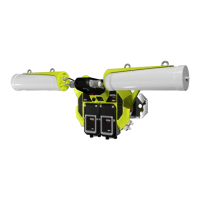10
2019 MST Global Commercial in Confidence
XON Digital Plat
orm
User Manual
Revision A
Chapter 4: Network System Design
Topics:
Installation Types and Coverage
Power Requirements
Choosing Antennas
Placement of AXON Air units
Placement of Antennas
Determining distance between AXON Air modules
This chapter describes network system design for underground mines.
A MST System Engineer will usually design and preconfigure a network based on the requirements
and layout of each mine site. This will involve a visual inspection of the mine site to identify user
areas, and determine access point locations. A RF (Radio Frequency) site survey is also conducted
to understand the behaviour of radio waves in the mine. The following factors help determine network
design:
Wireless coverage requirements of the mine
Quantity and type of wireless client devices connected to the network
Wired client devices connected to the network and their location
Interconnection to the mine's existing corporate network
Policies for network protocol between networks
Cabling requirements
Antenna types to use with each unit and mounting method for each antenna
Mounting location and installation method for each network device.
4.1
Installation Types and Coverage
Wireless network coverage can be described as:
Wi-Fi hotspot — Network coverage is provided in key areas, such as crib areas and refuge bays.
Full coverage — Seamless wireless coverage by strategically placing AXON Air units so their
radio fields overlap.
An AXON Air can communicate at wireless distances of 150-300 metres, depending on the chosen
antenna,geometry and geology of the mine.
4.2
Power Requirements
The power requirements for a network are unique to each site installation. Determining power
requirements can be complex and is dependent on various factors such as the number of AXON Core
units, PoE devices, branches in the network and composite cable lengths.

